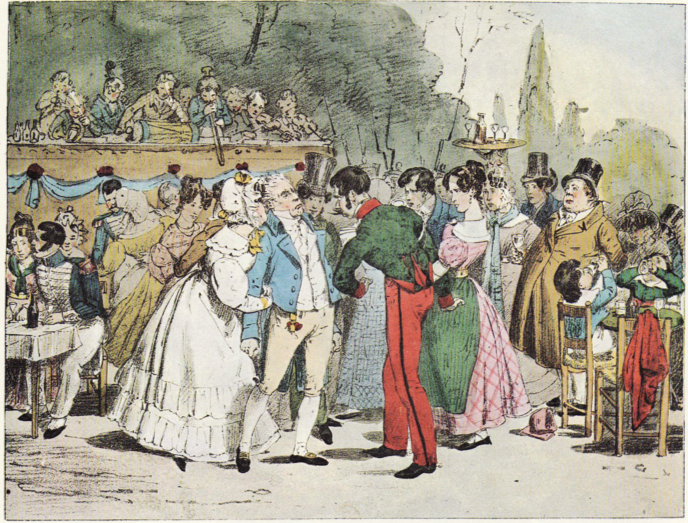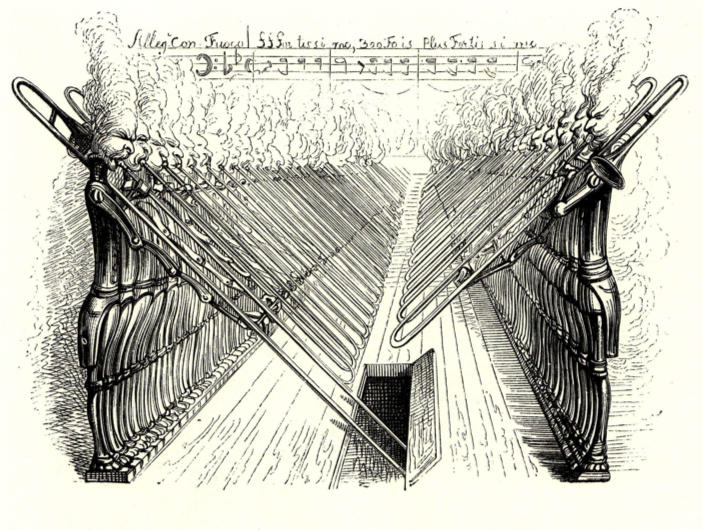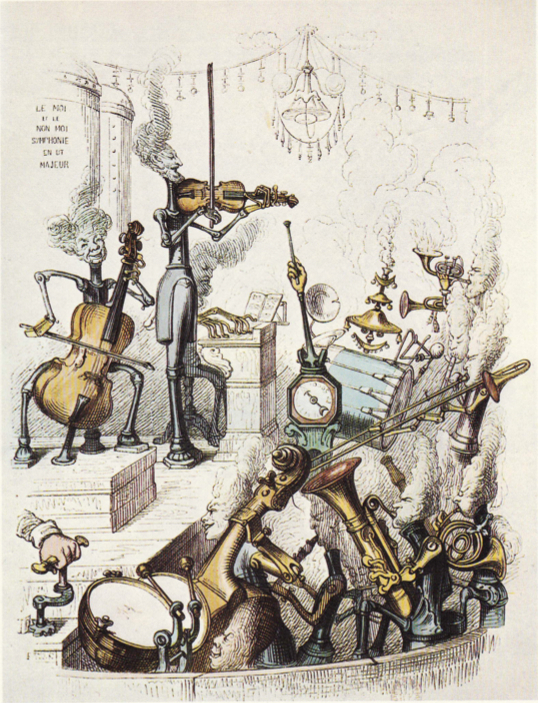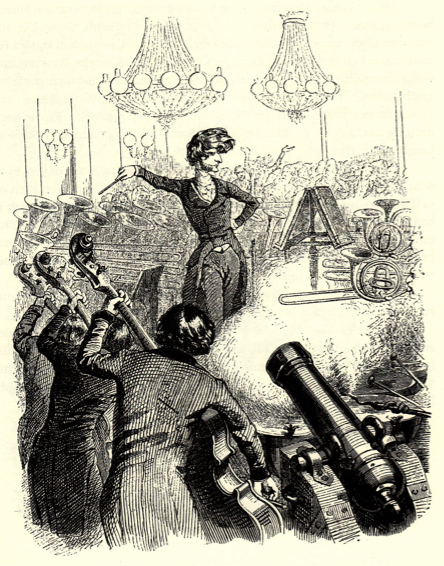I recently added some images by J. J. Grandville (1803-1847; original name: Jean-Ignace-Isidore Gérard), a famous French caricaturist who frequently portrays musical subjects, to the 19th century timeline (1st half). The four Grandville images that include trombone, shown below, represent something of a shift in iconography, and perhaps the way trombone is seen by the public at large. Throughout much of its history, of course, the trombone is depicted as a sacred instrument; see, for example, posts such as Perching on the Pipes and Trombone and Altarpieces, as well as those including angel musicians in general. However, it is during the period that Grandville is active (early-mid 19th century) that trombones begin to be depicted more and more in the context of caricatures or other humorous settings. From the sublime to the ridiculous? You be the judge. (For all references, see Trombone History Bibliography.)
1828—Paris, France: Caricaturist J. J. Grandville depicts a country dance in his lithograph, Sundays of a Good [Middle-Class] Citizen. At the front-center of the orchestra is a rear-facing trombone (see below image; public domain) (Fromrich 29).
1844—France: Famous caricaturist Jean-Ignace-Isidore Gérard (also known as J. J. Grandville) publishes a caricature entitled Melody for 200 Trombones in Un autre Monde. A parody of perceived overuse of brass in contemporary music, it depicts 2 long lines of trombonists, this first one on the left having a slide so long it requires a trap door. The caption instructs that the piece be played “with fire, fortissimo, repeated 300 times, then louder still” (see below image; public domain) (Thomson 61; Fromrich 134).
1844—France: Another illustration by J. J. Grandville in Un autre Monde depicts a Concert of Steam (Concert a la vapeur) in response to a prediction about steam changing the world. Included in the “steam orchestra” is a trombone (see below image; public domain) (Fromrich 133).
1845—Paris, France: A caricature by J. J. Grandville depicts Berlioz conducting a monstrous orchestra that includes a cannon and at least 7 trombones (see below image; public domain) (Hindley 252).